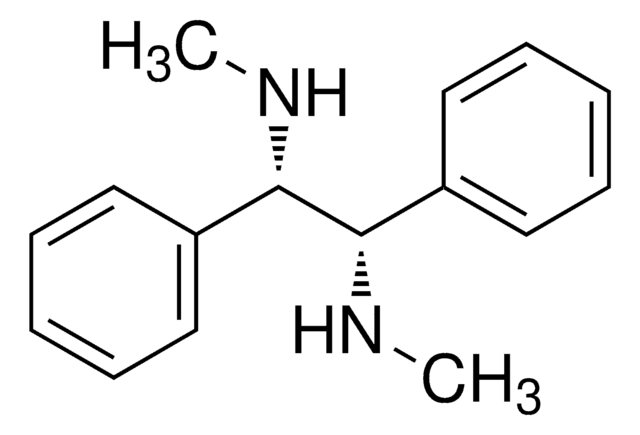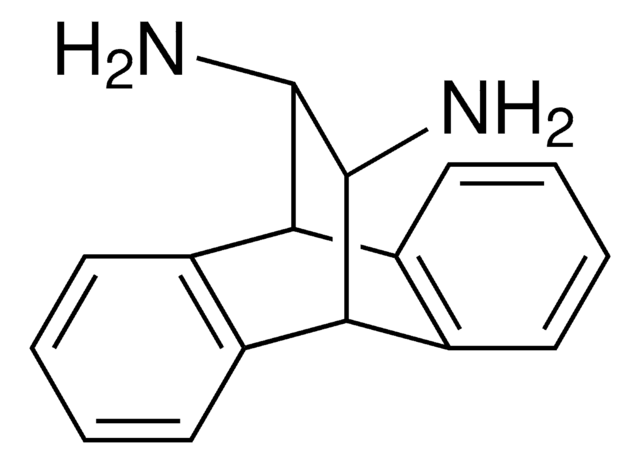추천 제품
Quality Level
분석
97%
형태
powder
광학 활성
[α]22/D +258.0°, c = 1 in H2O
mp
219-224 °C
작용기
amine
SMILES string
Cl[H].Cl[H].N[C@H]([C@@H](N)c1cccc2ccccc12)c3cccc4ccccc34
InChI
1S/C22H20N2.2ClH/c23-21(19-13-5-9-15-7-1-3-11-17(15)19)22(24)20-14-6-10-16-8-2-4-12-18(16)20;;/h1-14,21-22H,23-24H2;2*1H/t21-,22-;;/m0../s1
InChI key
SHNGCXWOHADIKG-IXOXMDGESA-N
애플리케이션
신호어
Warning
유해 및 위험 성명서
Hazard Classifications
Acute Tox. 4 Oral - Eye Irrit. 2 - Skin Irrit. 2 - STOT SE 3
표적 기관
Respiratory system
Storage Class Code
11 - Combustible Solids
WGK
WGK 3
Flash Point (°F)
Not applicable
Flash Point (°C)
Not applicable
개인 보호 장비
dust mask type N95 (US), Eyeshields, Gloves
이미 열람한 고객
문서
Chiral vicinal diamines are of tremendous interest to the synthetic chemist as they are found in many chiral catalysts and pharmaceuticals.
관련 콘텐츠
The Chin group is interested in computational and experimental approaches to understanding stereoselective recognition and catalysis. Their studies in weak forces (H-bonding, electronic and steric effects) has led to a highly efficient method for making limitless varieties of chiral vicinal diamines from the 'mother diamine' that are useful for developing stereoselective organocatalysts or transition metal-based catalysts as well as for developing drugs (Acc Chem Res (2012) p1345). The 'mother diamine' is also useful for making binol, monophos and binap analogs. The Chin group is also interested in using reversible covalent bonds for stereoselective recognition and L to D conversion of natural and non-natural amino acids (EJOC (2012) p229).
자사의 과학자팀은 생명 과학, 재료 과학, 화학 합성, 크로마토그래피, 분석 및 기타 많은 영역을 포함한 모든 과학 분야에 경험이 있습니다..
고객지원팀으로 연락바랍니다.











